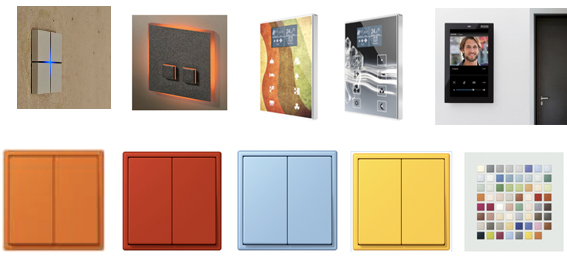
By Mark Warburton, Ivory Egg.
Choice is an interesting thing. When faced with limited options, it’s often easy to work out what you want. Presented with just two options, you could decide on the flip of a coin. Regardless of the actual result, by the time the coin has landed you will know your preference.
The more options you have though, the harder it gets to make a decision. This is amplified when the difference between the options is great. Picking a shade of paint for example, is a fairly low-impact choice. The differences are minimal, as is the impact and final outcome. However, if you are trying to pick between totally different paint colours, the decision is much more difficult. The impact is obvious, and your mind must work harder to visualise the effect that each colour will have on the space.

Decisions, decisions
With over 500 manufacturers now all a part of the KNX Association, there has never been more choice. Some items, such as power supplies, are fairly straightforward to select. They all fundamentally perform the same task, and while there might be differences in the price or some additional features that guide your decision, reliability is really the key factor. To use our earlier analogy, this is an example of picking your shade of a single colour paint. The impact on the project will be minimal and so too should the energy used to decide.
Where it gets a lot more complicated is keypads. There are literally thousands of different options when you consider the number of manufacturers, number of styles and the ranges of finishes. Even when you stick with a single manufacturer, you will have a huge choice.

We all have our own preferences on keypads. Style, colour, optimum layout of buttons; all subjective choices. It could also be based on functionality, for example, the need for an integrated humidity sensor.
Ultimately though, it’s the customer’s decision as they are the one who will be looking at the product in their house. The challenge is offering enough choice so that the customer will find something they like, but not offering so many that you end up with decision fatigue and the wrong choice being made.
Helping the decision-making process
The customer needs to enjoy the process. If the journey to find the perfect keypad were a chore, everyone would be using standard electrical switches in white plastic. It is human nature to decide what we don’t like first, then select whatever is remaining as our preference. This is why it can be useful to have some widely-different designs in your product portfolio.
Start with the overall design and focus on the button styles. Once this is done you can turn your attention to finishes, which is a much easier decision as it is usually based on the interior design.
The key is to guide and support the customer in their decisions. Letting them run wild and choose whatever they find on the Internet can make the supply and support difficult, even when working with a standardised system.
KNX means that all of your paints complement each other
Whilst most of the product decisions on a project can be straightforward, it can soon add up to being a lot to work out. Thankfully, there are distributors worldwide that specialise in navigating the complex world of KNX. They will offer you the support needed to select the right products.

Of course, you still have to choose between the different distributors, but this is usually a decision based on customer service, availability of product and the level of support they can offer. This is where a distributor comes into their own. They can help you navigate the hundreds of manufacturers to ensure that the right portfolio is offered to your customers and ultimately the decision-making process is full of choice without causing fatigue. A distributor makes picking the paint colour easy; they have already done the homework, they will supply you with a quality product and will be there for you if anything goes wrong.
Conclusion
Ultimately, KNX is a system that gives you the flexibility to choose from a huge range of products and solutions with the assurance that, regardless of your decision, the products will work together.
This ease of compatibility also ensures that manufacturers continue to develop their products and improve factors such as reliability and performance. If the worst comes to the worst and you are not happy with your decision, you can always change to a different manufacturer. If only all of life’s decisions were so easy!
Mark Warburton is the Technical Director of Ivory Egg (UK) Ltd, a supplier of leading KNX products and provider of KNX training courses.












